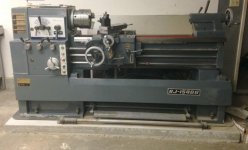My garage is really out of level and at some point I might just pour a new slab, but for now I can't afford that. It would be a bit incovient but I can put the machines on the levelst part of the garage, my question is should I be prioritzing havingt the mill and late on a level surface over havin them a bit in the way?
I do plan on fixing this, but it may take me a year to save up for it.
I do plan on fixing this, but it may take me a year to save up for it.




